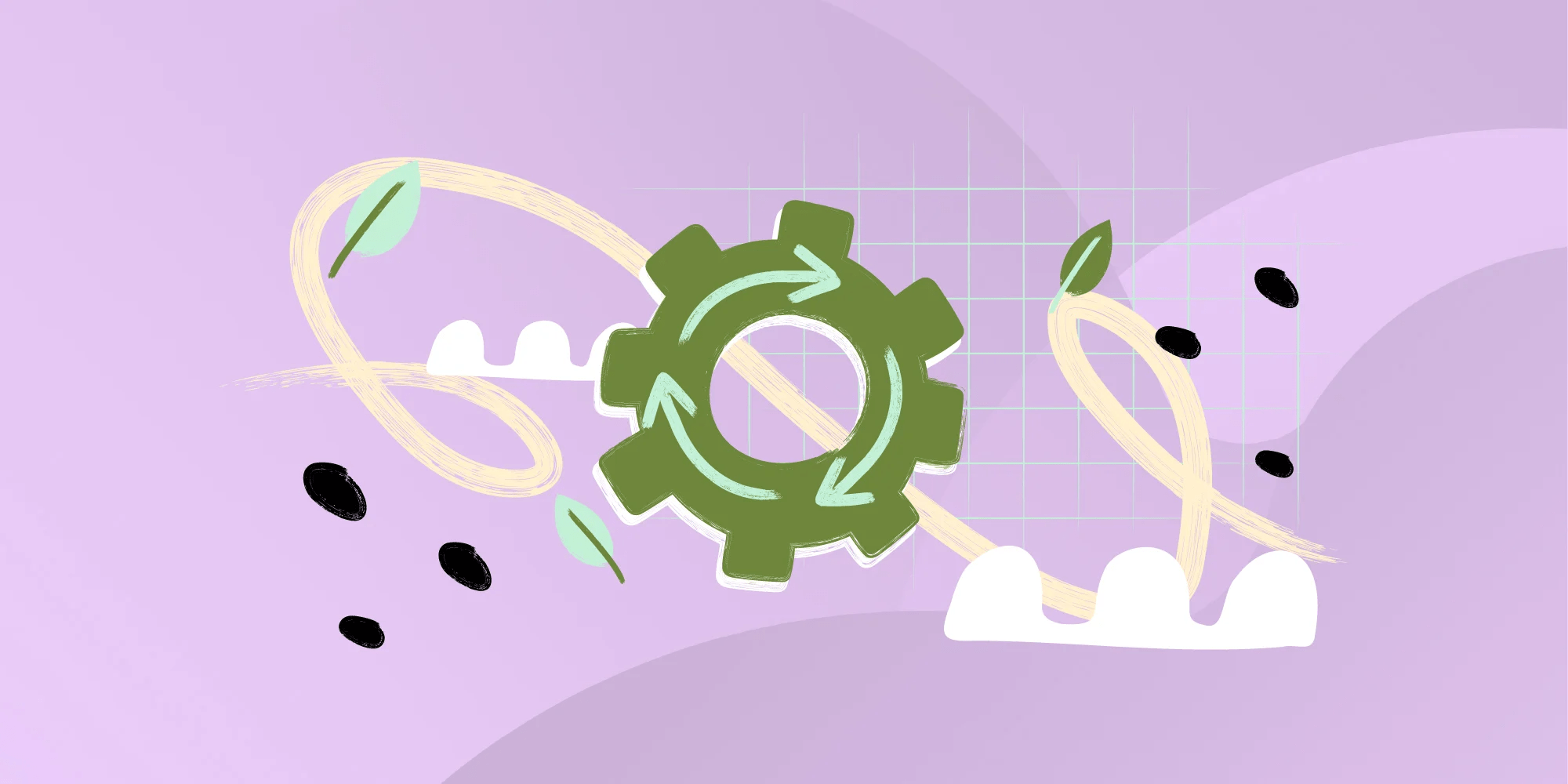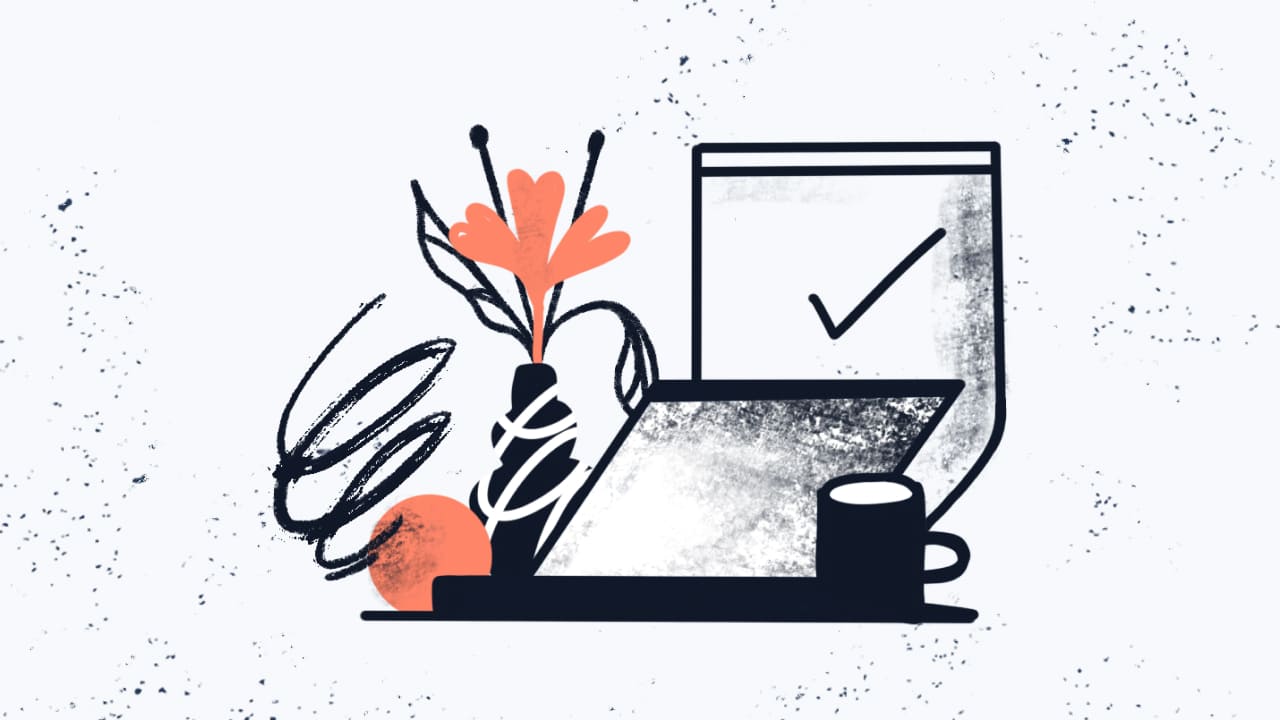Businesses are increasingly adopting cloud technologies for their scalability, cost efficiency, and performance benefits. However, along with the benefits come new challenges, particularly in ensuring robust security measures.Effective enterprise cloud security safeguards against threats and data breaches, forming a cornerstone of modern cybersecurity culture best practices. Let's explore key strategies, tools, and recommendations to fortify your cloud environments.
Let's begin.
Introduction to enterprise cloud security
Enterprise cloud security refers to the set of practices, technologies, policies, and measures put in place by organizations to protect their data, applications, and infrastructure when using cloud computing services for their business operations.
Cloud computing offers significant advantages, including saving on IT costs, easily adjusting resources based on needs, better performance, and increased reliability. Enterprise cloud security is essential for protecting against cloud security threats and data breaches.

The basics of cloud environments
Cloud environments come in three primary forms: public, private, and hybrid clouds, each with distinct security challenges and benefits.
Public Cloud
Public cloud services are provided by third-party vendors and offer resources from a shared, virtualized pool. These services are cost-effective and scalable but may raise concerns about data privacy and security.
Private Cloud
A private cloud involves dedicated resources and servers, offering greater control and security. This setup is ideal for organizations with stringent security requirements and compliance needs, as it allows for customized security measures.
Hybrid Cloud
Hybrid cloud combines public and private cloud elements, enabling data and task segregation. This model requires robust access controls, encryption, continuous monitoring, and compliance auditing to manage security across diverse environments effectively.

Shared responsibility in cloud security
In the world of cloud computing, the shared responsibility model is a fundamental principle that helps both the CSP and the customer understand their roles in keeping the cloud environment secure. Let's break it down:
What the Cloud Service Provider (CSP) does
-
Physical security: The CSP ensures that the data centers where your data is stored are physically secure. This includes guards, surveillance cameras, and secure access points.
-
Infrastructure security: The cloud service providers are responsible for maintaining the security of the hardware and software that make up the cloud infrastructure. This includes servers, networking equipment, and the underlying software that runs the cloud services.
-
Platform security: Providing secure platforms for running applications, including patch management and vulnerability assessments.
-
Compliance Management: The CSP ensures that their services comply with various industry standards and regulations, such as data protection laws.
What the customer does
-
Data security: As the customer, you are responsible for the security of your own data. This includes encrypting sensitive information, managing access controls, and ensuring that your data is backed up.
-
Application security: If you're running applications in the cloud, you need to ensure that these applications are secure. This includes patching vulnerabilities, implementing secure coding practices, and monitoring for security threats.
-
Identity and Access Management (IAM): You need to manage who has access to your cloud. This includes setting up user accounts, assigning roles and permissions, and monitoring access logs.
-
Configuration Management: Ensuring cloud resources are securely configured, following best practices such as the CIS Benchmarks and regularly auditing configurations.
-
Monitoring and logging: Setting up comprehensive monitoring and logging to detect and respond to security incidents in real time.

Why shared responsibility is important
-
Clarity: The shared responsibility model helps both parties understand their specific roles and responsibilities. This clarity prevents misunderstandings and ensures that all aspects of security are covered.
-
Collaboration: By working together, the cloud provider and the customer can create a more secure environment. The CSP provides a secure foundation, while the customer builds on that foundation to protect their specific assets.
-
Accountability: Each party is accountable for their part of the security. This accountability helps to identify and address security gaps quickly.
Example scenario
Imagine you're using a cloud service to store important business documents. The CSP ensures that the data center where your documents are stored is secure and that the servers are protected from physical and cyber threats.
However, it's your responsibility to ensure that only authorized employees can access those documents, that the documents are encrypted, and that you have a backup plan in case something goes wrong.
Key measures for enterprise cloud security
Ensuring robust security in cloud environments requires a comprehensive approach, leveraging several key security measures. Here’s a closer look at some fundamental components:
Data encryption
Data encryption transforms readable data into an unreadable format, which can only be converted back into its original form using decryption keys. This measure ensures that sensitive information remains protected, even if intercepted by unauthorized parties.
Types of encryption:
-
At-rest encryption: Protects data stored in cloud storage systems. Examples include encrypting files on disk drives and databases.
-
In-transit encryption: Secures data as it travels between systems, such as between a user's device and cloud service. SSL/TLS protocols are commonly used for this purpose.
Best practices:
-
Use strong encryption algorithms: Implement encryption standards such as AES-256, which offers robust protection.
-
Manage encryption keys securely: Ensure encryption keys are stored and managed securely, with access controls in place.
-
Regularly update encryption protocols: Keep up with advancements in encryption technologies and update protocols as needed.
Identity and Access Management (IAM)
IAM is a framework for managing and controlling user access to your cloud assets. It ensures that only authorized individuals can access specific data and services.
Best practices:
-
Implement Role-Based Access Control (RBAC): Assign permissions based on user roles to minimize unnecessary access.
-
Use MFA: Add an extra layer of security by requiring additional verification methods.
-
Regularly Review Access Rights: Conduct periodic audits to ensure that user permissions are up-to-date and appropriate.
Network Security
Network security involves protecting the cloud network infrastructure from unauthorized access, data breaches, and other cyber threats. This includes securing both internal and external network traffic.
Key aspects:
-
Firewalls: Deploy firewalls to monitor and control incoming and outgoing network traffic based on predefined security rules.
-
Intrusion Detection and Prevention Systems (IDPS): Detect and respond to potential security threats within the network.
-
Virtual Private Networks (VPNs): Use VPNs to secure remote access to cloud resources and encrypt data transmission.
Best practices:
-
Segment networks: Divide the network into segments to contain and control traffic flow.
-
Regularly update security policies: Ensure network security policies are current and address emerging threats.
-
Monitor network traffic: Continuously monitor network traffic for unusual or suspicious activities.
Security Information and Event Management (SIEM)
SIEM systems aggregate, analyze, and manage security data from various sources to provide a comprehensive view of the organization's security posture. They play a crucial role in detecting and responding to security incidents.
Best practices:
-
Integrate SIEM with other security tools: Enhance SIEM effectiveness by integrating it with IAM, network security, and other security solutions.
-
Configure custom alerts: Set up alerts based on specific threat patterns relevant to your organization.
-
Regularly review and adjust rules: Continuously review SIEM rules and configurations to adapt to new threats and changes in the environment.

Cloud security architecture and design
Cloud security architecture is a framework that integrates security practices with business needs and technology requirements in cloud computing environments. It aims to protect cloud resources and ensure resilience against potential threats. To understand this concept better, let's break it down into its key components and explore them in more detail.
Security controls for cloud service models
Cloud computing typically involves three main service models: Infrastructure as a Service (IaaS), Platform as a Service (PaaS), and Software as a Service (SaaS). Each model requires specific security controls:
Infrastructure as a Service (IaaS)
IaaS provides virtualized computing resources over the internet. Security in IaaS focuses on:
-
Securing virtual machines
-
Protecting storage systems
-
Safeguarding network components
Platform as a Service (PaaS)
PaaS provides a platform for developers to build, run, and manage applications. Security in PaaS concentrates on:
-
Securing development and deployment platforms
-
Ensuring secure coding practices
-
Utilizing application firewalls and vulnerability scanning tools
Software as a Service (SaaS)
SaaS delivers software applications over the internet. Security in SaaS emphasizes:
-
Protecting software applications and their data
-
Implementing user access controls
-
Employing data encryption
-
Conducting application security testing
Security design principles
Security design principles are fundamental concepts that guide the development of a secure cloud architecture. Three key principles are:
-
Least privilege: This principle advocates granting users the minimum level of access necessary for their roles. It helps limit potential damage from accidental or intentional misuse of privileges.
-
Defense in depth: This approach involves employing multiple layers of security controls to protect against different types of threats. It creates a more robust security posture by not relying on a single point of defense.
-
Secure by design: This principle emphasizes integrating security measures into the design and development stages of cloud applications and infrastructure rather than treating security as an afterthought.
To maintain a robust cloud security architecture, organizations should:
-
Conduct regular security assessments to identify and address vulnerabilities
-
Ensure compliance with industry standards and best practices, such as those outlined by NIST and ISO/IEC 27001
-
Implement strong access controls using methods like role-based and attribute-based access control
Cloud security solutions and tools
Organizations often employ specialized security tools to manage and safeguard cloud environments effectively. Two important categories are:
Cloud access security brokers (CASBs)
CASBs act as intermediaries between cloud service users and cloud applications. They provide visibility and control over cloud usage, enhancing security and compliance. Key functions of CASBs include:
-
Access control: Managing and enforcing access policies for cloud applications
-
Data security: Protecting sensitive data through encryption and data loss prevention measures
-
Threat protection: Detecting and responding to threats within cloud applications
When implementing CASBs, organizations should:
-
Choose a CASB that aligns with their security needs and cloud strategy
-
Ensure integration with existing security solutions
-
Regularly review and update access and data security policies
Cloud-native application protection platforms (CNAPPs)
A CNAPP is a cloud security solution that provides a unified approach to securing cloud-native applications across different cloud environments. They address challenges such as securing containerized applications and managing configurations. Key features of CNAPPs include:
-
Vulnerability Management: Identifying and remediating vulnerabilities in cloud-native applications and container images
-
Configuration Management: Ensuring secure configurations for cloud services and infrastructure
-
Runtime protection: Monitoring and protecting applications during runtime against threats and anomalies
When implementing CNAPPs, organizations should:
-
Select a comprehensive CNAPP that covers various aspects of cloud-native security
-
Implement continuous scanning to detect vulnerabilities and misconfigurations early
-
Integrate CNAPPs into continuous integration and delivery pipelines

Compliance and governance in the cloud
Compliance and governance are essential components of enterprise cloud security, ensuring that cloud operations meet legal, regulatory, and internal standards. Effective compliance and governance frameworks help organizations protect sensitive data, mitigate cloud security risks, and maintain trust with customers.
Compliance
Compliance involves adhering to industry regulations and standards that govern data protection and security. Key regulations include: General Data Protection Regulation (GDPR), Health Insurance Portability and Accountability Act (HIPAA) and Payment Card Industry Data Security Standard (PCI DSS).
Best practices for compliance:
-
Regular audits: Conduct regular compliance audits to ensure adherence to relevant regulations and standards.
-
Data protection policies: Develop and implement data protection policies that align with regulatory requirements and industry best practices.
-
Training and awareness: Educate employees about compliance requirements and data protection practices to minimize the risk of non-compliance.
Governance
Governance involves establishing and enforcing policies, procedures, and frameworks to ensure effective management and security of cloud operations. Key aspects of cloud governance include:
-
Policy development: Create comprehensive cloud security policies that define roles, responsibilities, and procedures for managing cloud resources.
-
Risk Management: Identify and assess potential risks associated with cloud operations and implement measures to mitigate those risks.
-
Compliance monitoring: Continuously monitor compliance with internal policies and external regulations to ensure ongoing adherence and promptly address any issues.

Conclusion
Understanding and implementing robust enterprise cloud security measures is crucial as organizations increasingly rely on cloud technologies.
Key security measures, such as data encryption, IAM, network security, and SIEM, combined with a solid security architecture and effective tools like CASBs and CNAPPs, help fortify enterprise cloud security. Ensuring compliance, governance, and a holistic security strategy supports business continuity, trust, and growth in a secure digital landscape.















